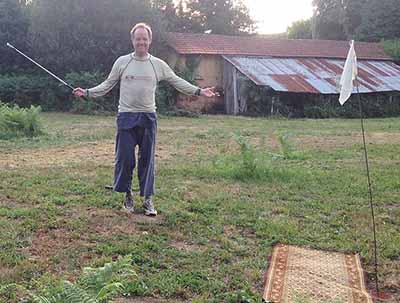We’ve all had “that’s what I should’ve said” moments. After a discussion is already over, the perfect one-liner, ideal comeback, elegant analogy or consummately constructed point occurs to us. The one parlay that would have made our argument. Golfers have a name for the do-over of a shot that didn’t go where they wanted, the Mulligan. In real life you don’t always get the chance for a live do-over. But, being face-to-face with a new client prospect is the most important moment in sales. If you leave that meeting and don’t revisit it again, the most important moment becomes a lot less important. A meeting loses value if you don’t go back and take a thinking Mulligan, a mental do-over of your meeting.
Not Mulliganing your meeting is the 5th and final client-meeting mistake salespeople make. And, it’s a double mistake. The first is not debriefing the process of your meeting, taking a Mulligan on your meeting technique. The second is not Mulliganing the content of the meeting, to determine where you can be useful, and to gather all the relationship building gems you turned up.
The first part of the debrief is the process debrief. It’s the how of your meeting, and it’s about getting better at your craft; so your next meeting is even better.
The Process Debrief
A good process debrief starts before you set foot in the meeting, with some process thinking, and some notes. These notes about your desired behavior and conduct in the meeting are your Before Action Review (B.A.R.) process objectives. They give you something to reflect against as you review the meeting after. How do you want to be in the meeting? What are the behaviors you want to exhibit? For example, do you want to be more relaxed, more intense, talk less, ask more questions, notice body language? What’s the process you want your meeting to follow? Will it be just a conversation, or will there be a presentation component? How much time do you want to spend on each part of your meeting process? For example, you might write, I want to take advantage of small talk to learn some personal things about the people I’m meeting. Remember, while preparing for the meeting, write down what you want to do and how you want to be in the meeting. You measure your process and execution against these B.A.R. objectives.
The ideal fodder for a debrief would be a complete video of the whole meeting. Think how much you’d learn about how you orchestrate a meeting, and how you conduct yourself if you could see all your behaviors, and hear and see again everything you and your client said and did. Alas, a video of your meeting isn’t usually an option, which is why your meeting notes are critical to leverage what happens in a face to face meeting. (For more on notes see mistake #4 Total Recall).
Your notes from the meeting will usually be more about the content of the meeting than the process. You’re probably more likely to note content like ‘line issues in pre-production’ than you are to make process notes like,’leaned forward and made strong eye contact here.’ However, reading your notes will help you recall what you and your client did or said to get you to that content point in the meeting. This is also why a Before Action Review is so important. It tunes your radar to pay attention to your behavior and your process while you’re in the meeting. (You can also bring a colleague to the meeting and tune them to the process points at which you want to get better.)
The Content Debrief
Part two of the debrief answers the question – What did you learn that you can use to build touchpoints to your client?
Review your meeting notes, ideally with someone else who has a stake in your success, with an eye on generating reasons to touch base again with the person with whom you met. Debriefing the content of the meeting with someone compels you to explain what you learned about your client. And, you have another brain to help make connections between what you learned in the meeting and reasons to re-connect with your client. Imagine the content debrief goal is to create a touchpoint calendar with seventeen, or twenty-six or fifty-two reasons to touch base with that client again over the next several weeks or months. Do a thorough Mulligan and you’ll find ample opportunities, business and personal, to make contact again with your client. Legitimate reasons to stay in touch are the recipe for creating some relationship headspace in your client’s mind. You want to occupy just enough headspace so that when they have a need, they think of you.
When it comes to meetings with prospective clients, always take a Mulligan. Do a do-over of your meeting. You’ll get better at your craft, and all those ideas for getting in touch with your prospective client will get unearthed and on your calendar.
The ideas in this post come from Tim’s book Never Be Closing.
Tags: building client relationships, client meetings, connecting, debriefing, first meeting, follow-up, relationships

[…] The 3rd Mistake in Sales Meetings – the Lex Luther Mistake #5 Salespeople Make in Client Meetings- The Mulligan […]